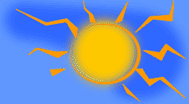|  |
||||||||||
|
|
|||||||||||
|
Domestic activities Home and offices produce large amounts of rubbish and sewage everyday. As we go about our work and daily living, we leave behind remnants of food, we throw away packaging materials, and we discharge sewage containing human waste, soaps and detergents. Pile of dirty and rotting materials attract rodents and insects which may carry organisms dangerous to our health. Rotting materials also produce the gas methane, which burns easily and is a fire hazard. In addition, our vehicles give off many poisonous substances such as carbon monoxide, nitrogen oxides and lead. Industrial Activities In the process of manufacturing a product, other substances could be produced. These are called by-products. These substances can be harmless, or they can be highly poisonous. An industrial activity that produces many pollutants is mining. In gold mining, for example, mercury is used in the extraction of gold ore. Mercury is left behind when the ore has been extracted, and the mercury contaminates the soil. Agricultural Activities Use of fertilizers to increase the crop yield, can be sources of pollution. Farm animals also produce large amounts of waste. When animal wastes is washed into rivers and streams, it pollutes the water.
|
|||||||||||
 |
|||||||||||
